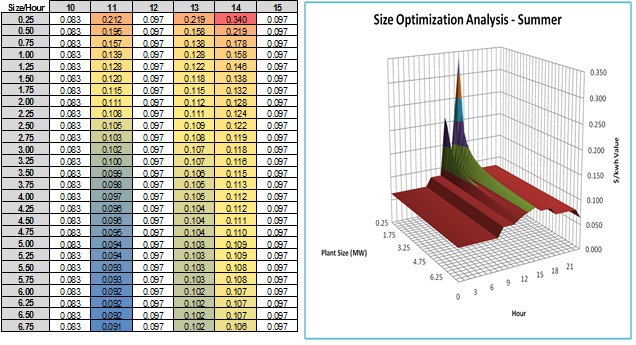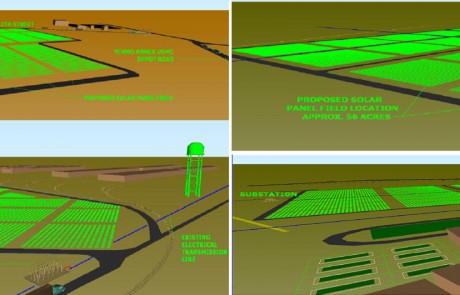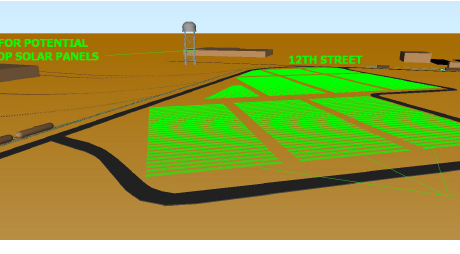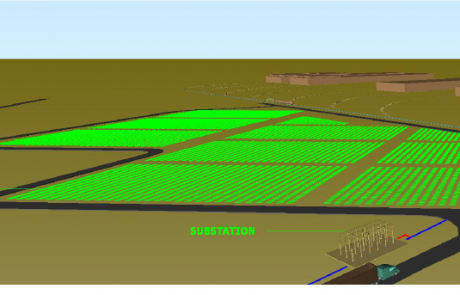Using Tariff Price Algorithms to Find Lowest PPA Price

Complex algorithms were used in the NAVFAC MATOC proposal to ensure that each individual site maximized renewable energy production made available by the lowest levelized cost of energy (LCOE).
Electricity cost profiles were established for individual site elements that were driven by demand curves, utility tariffs, and detailed proforma and energy production models.
Site designs were then iterated with corresponding annual production profiles back-fed into the proforma models until the optimum solution that coupled the desired technical configuration with acceptable financial performance was reached.
Marginal Energy Cost Analysis Mitigates Risk
Using marginal energy prices rather than average energy prices is a necessary due diligence tool for conducting accurate and predictive life-cycle cost analysis. This is true not just for solar, but for all energy generation or displacement projects, as successful development often hinges on achieving the lowest PPA price. From the off-taker’s perspective, marginal prices are those they pay (or save) for their last units of energy used or saved. From the utility’s perspective, marginal electricity costs are the last costs experienced by utilities for the last kilowatt-hour (kWh) of electricity produced. A utility’s marginal cost can be higher or lower than its average price, depending on the relationships between capacity, generation, transmission, and distribution costs.
PowerSurety typically uses multiple methods for predicting marginal energy prices at different phases in a project lifecycle. The outputs of these methods are refined as project development continues and design criteria is established. All methods, regardless of complexity, are only as good as the quality of data on which they are based, and therefore, PowerSurety’s earliest development activities are often focused on baselining existing energy use and cost structures.
The methods PowerSurety use are as follows:
1. Regression analysis of off-taker utility bill data
2. Hourly utility marginal cost analysis
3. Tariff-based energy bill calculation
Hourly utility marginal costs provide the most accurate economic analysis for most types of generation projects. These include renewable generation, energy storage projects that participate in ancillary services programs, and microgrid projects that provide demand reduction services.
Proposed Project Features
7.75 MW AC
2,068 (avg) kWh/kWp DC
>120,000 Modules
String Level Monitoring
Tracking
New PV Substations
Using Design Iterations to Determine Lowest PPA Price
Renewable energy costs are highly dependent on attributes of specific site configurations which, in turn, impact the lowest PPA price achievable. Similarly-sized layouts can carry dramatically different cost bases since project costs are driven by utility interconnect, electrical distribution configuration, and civil site conditions, as examples. Each design iteration carries initial cost paybacks which must be weighed against performance efficiencies and mission impacts in order to make informed decisions on optimal solutions. Design iterations are developed first so that engineering takeoffs can be performed to generate a firm cost basis and exacting solar production models.
Federal Acquisitions Requirements-compliant (FAR) PPA
Submitted with Chevron’s proposal was a FAR-compliant power purchase agreement (PPA). The submitted PPA was pre-vetted with renewable energy financiers and was developed with the overarching objective of not being “scored” as a capital lease by OMB.
Attributes of the FAR-compliant PPA Included:
Did not conflict with the terms of the RFP, thereby supporting various federal contracting requirements and provisions such as termination, being subject to annual appropriations availability, labor laws, assignments, and force majeure or delay.
Did not violate any federal law or regulation.
Closely resembled commercial PPAs to ensure ease of adoption by financiers, lenders, and investors.
Included terms important commercial financing viability and was structured to pass an OMB “scoring” review, thereby avoiding designation as a Capital Lease.













